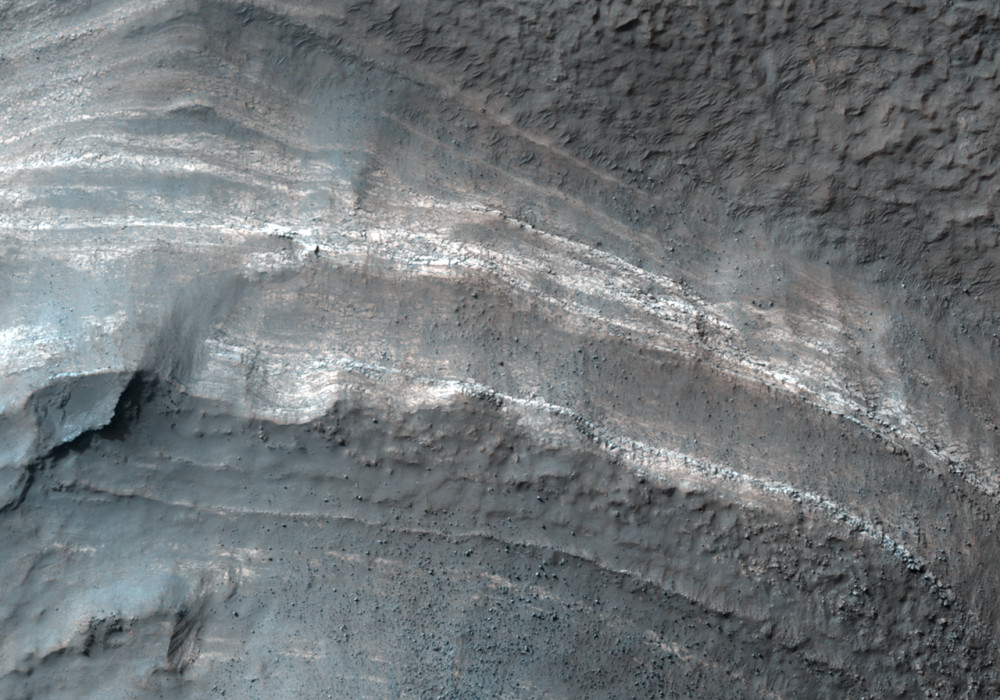This image shows an area within a depression at the northern inner rim of the Hellas impact basin. Prominent layers of rock are visible, expressed here as topographic benches and cliffs.
The layers exhibit various brightnesses (in the black and white image, from the HiRISE red filter) and colors (in the color RGB product). The geology of the Hellas basin is complex, with the original impact that formed the structure occurring more then four billion years ago. Since then, the basin has been modified by many processes, including volcanism, wind, water, and maybe glacial activity.
This makes it challenging, without further study, to know the origin of the layers seen here. However, some insight is gained simply by looking at the texture of the layers, which HiRISE can see with its high resolution. For example, many of the bright layers appear jointed; that is, they contain cracks in a regular, commonly polygonal, arrangement. Volcanic rocks can form such textures upon cooling, as can water-rich sediments upon drying.
Regular patterns of ripples are visible throughout the image, indicating pervasive wind activity. The color sub-image shows two boulders that have rolled from the cliffs to the east. Bounce marks are also apparent between the boulders and cliffs. Because the bounce marks have not been filled in with dust or sand, the boulders must have rolled down the slope fairly recently.
Written by: Nathan Bridges (5 July 2008)
More info and image formats at http://hirise.lpl.arizona.edu/PSP_008387_1510
Image: NASA/JPL/University of Arizona
